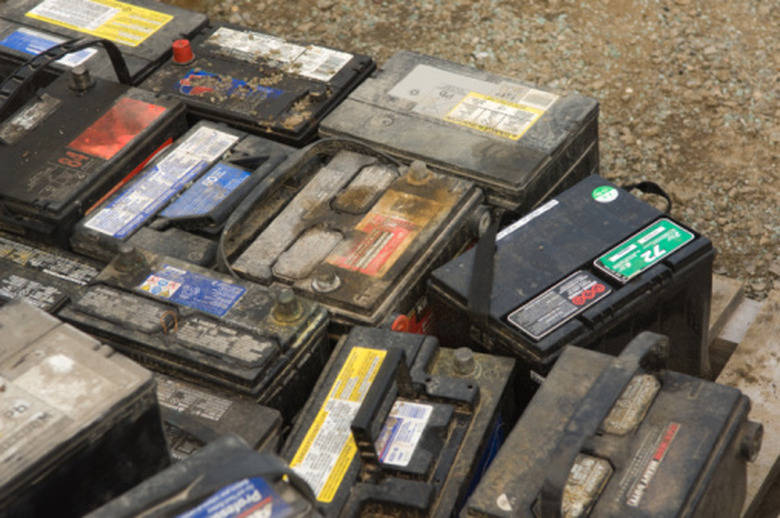How To Convert Reserve Capacity To Amp Hours
The reserve capacity of a battery is the number of minutes for which it can run at 25 amps of current without its voltage dropping below 10.5 volts. It roughly describes the amount of energy the battery effectively stores and technically specifies the battery's charge capacity. Voltage relates charge and energy by describing the amount of energy in each coulomb of charge. Ampere-hours is a different unit for describing the same quantity.
Step 1
Multiply the reserve capacity by 60 to convert it to seconds. For example, if a battery offers a 100-minute capacity: 100 x 60 = 6,000 seconds.
Step 2
Multiply this length of time by 25, which is the battery's amperage. Example: 6,000 x 25 = 150,000. This is the number of coulombs of charge in the battery.
Step 3
Divide this answer by 3,600, which is the number of coulombs in an amp-hour. Example: 150,000 / 3,600 = 41.67. This is the number of amp-hours in the battery.
TL;DR (Too Long; Didn't Read)
To convert in a single step, divide the reserve capacity by 2.4.
References
Cite This Article
MLA
Menezes, Ryan. "How To Convert Reserve Capacity To Amp Hours" sciencing.com, https://www.sciencing.com/how-8681870-convert-reserve-capacity-amp-hours/. 7 August 2017.
APA
Menezes, Ryan. (2017, August 7). How To Convert Reserve Capacity To Amp Hours. sciencing.com. Retrieved from https://www.sciencing.com/how-8681870-convert-reserve-capacity-amp-hours/
Chicago
Menezes, Ryan. How To Convert Reserve Capacity To Amp Hours last modified March 24, 2022. https://www.sciencing.com/how-8681870-convert-reserve-capacity-amp-hours/
